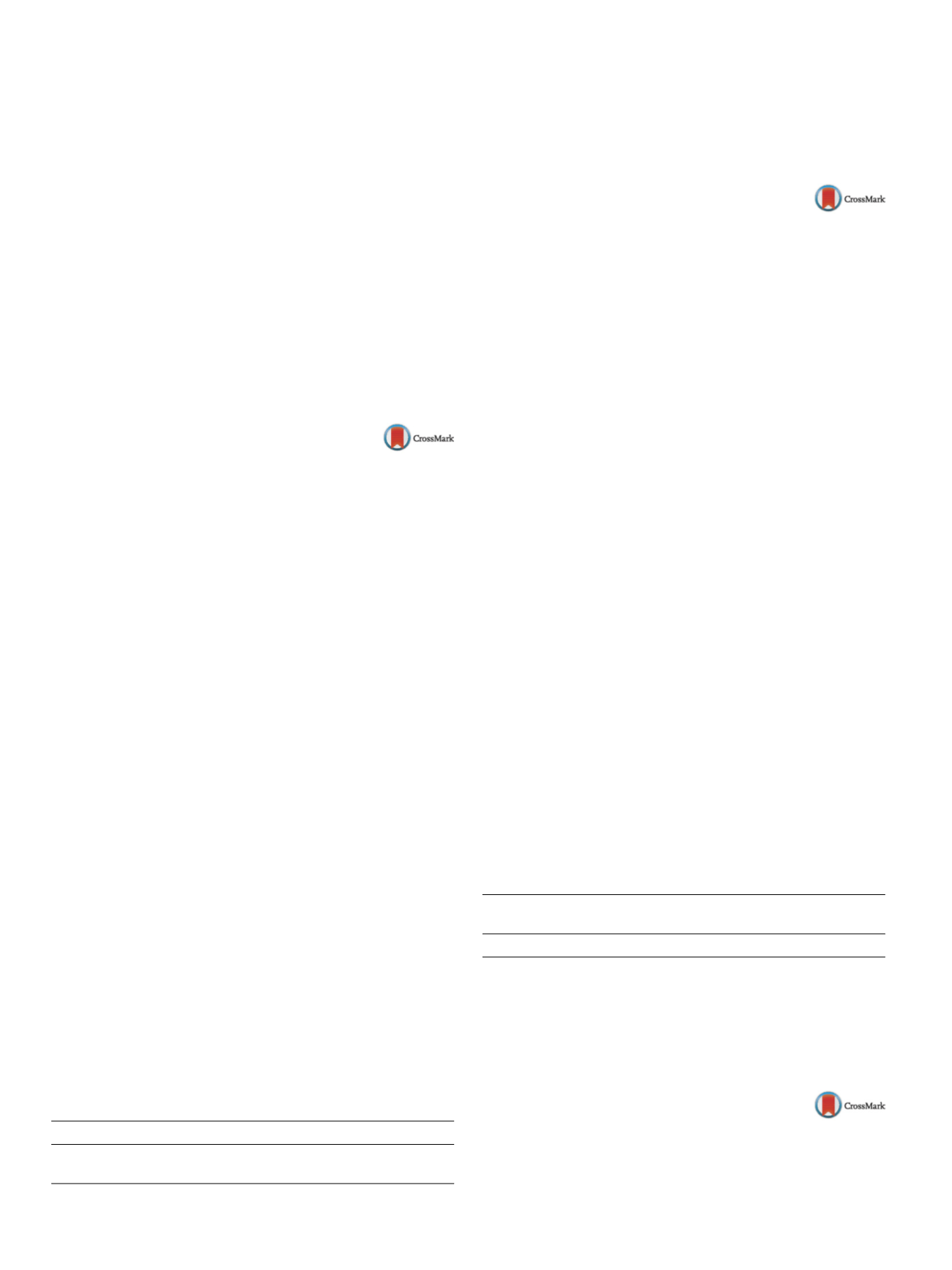

S396
25th European congress of psychiatry / European Psychiatry 41S (2017) S365–S404
Methods
Clinical-psychopathological, clinical-laboratory, con-
sulting of specialists, methods of psychological investigation
(CIWA; CA
Н
; SF-36) at day 1, 7 and 14 of treatment.
Results
AWS quantification score on admission was 41. Further
therapeutic regress of all AWS components was registered. At day 1
the patient’s condition started improving, clinical score was 32; at
day 3 – 17; day 5 – the score was 13, insignificant tremor remained.
At day 7 of treatment, practically complete relieving effect of the
therapy was ascertained. With CA
Н
method at day 7 of the treat-
ment, an increase of figures in all scales was registered: state of
health 2.7, activity 2.4, mood 2.5. SF-36 method: at day 1 – the
score was 24, day 7 – 32, day 14 – 49.
Conclusions
Thus, the developed by us method of integrated
treatment with inclusion of Cocarnit for withdrawal state in alcohol
addicts allows to stop acute signs of pathology within 3–5 days.
Disclosure of interest
The authors have not supplied their decla-
ration of competing interest.
http://dx.doi.org/10.1016/j.eurpsy.2017.02.454EW0841
Attachment disorders in alcohol and
gambling addicted patients:
Preliminary evaluations
R. Testa
1 ,∗
, P. Grandinetti
2, M. Pascucci
3, A. Bruschi
1,
P. Parente
4, G. Pozzi
1, L. Janiri
11
Catholic University of Sacred Heart, Institute of Psychiatry,
Department of Neurosciences, Roma, Italy
2
AUSL, Department of Mental Health, Modena, Italy
3
Institute of Psychiatry, University of Foggia, Department of Clinical
and Experimental Medicine, Foggia, Italy
4
Section of Hygiene, Catholic University of the Sacred Heart,
Department of Public Health, Rome, Italy
∗
Corresponding author.
Introduction
The addictive behaviors can be seen as attachment
disorders. In literature studies about the relationship between
attachment styles and addictions are few. However, in addicted
patients the identification of secure or insecure attachment styles
seems to have serious implications for the therapeutic alliance and
the treatment.
Objectives
To study the relationships between different attach-
ment styles and types of addiction (chemical or behavioral).
Aims
To examine the role of attachment styles in patients with
alcohol dependence (AD) or pathological gambling (PG).
Materials
We recruited 29 with AD and 33 with GP according
to DSM-IV-TR criteria; all patients were abstinent from addic-
tive behaviors at least since one month, the experiences in close
relationships (ECR) was administered for the study of attachment
styles.
Results
PG compared to AD has higher raw scores both anxi-
ety factor (
P
< 0.001) and avoidance factor (
P
= 0.003) at ECR. ECR
ambivalent correlates with the diagnosis of PG (
P
= 0.010); ECR
avoidant correlates with AD (
P
= 0.006); ECR anxiety shows a trend
of correlation with the diagnosis of AD (
P
= 0.052). The subjects
showed the following attachment styles
( Table 1 ).Conclusions
This is the first study that compares the attachment
styles of patients AD and PG. We found differences in attachment
styles of the two types of addiction, confirming the need of differ-
ent approaches and then different types of treatment. Our findings
need to be replicated in larger groups, also widening the target of
other addictions.
Table 1
Secure
Ambivalent
Anxious
Avoidant
PG 2
27
–
4
AD 1
13
6
9
Disclosure of interest
The authors have not supplied their decla-
ration of competing interest.
http://dx.doi.org/10.1016/j.eurpsy.2017.02.455EW0842
Attachment styles and severity of
pathological gambling: Preliminary
evaluations
R. Testa
1 ,∗
, P . Grandinetti
2 , M.Pascucci
3 , A.Bruschi
1 ,P. Parente
4, G. Pozzi
1, L. Janiri
11
Catholic University of Sacred Heart, Institute of Psychiatry,
Department of Neurosciences, Rome, Italy
2
AUSL, Modena, Department of Mental Health, Modena, Italy
3
Institute of Psychiatry, University of Foggia, Department of Clinical
and Experimental Medicine, Foggia, Italy
4
Section of Hygiene, Catholic University of the Sacred Heart,
Department of Public Health, Rome, Italy
∗
Corresponding author.
Introduction
The addictive behaviors can be seen as attachment
disorders. To our knowledge, the literature on the relationship
between pathological gambling (PG) and attachment styles is still
poorly represented. However, in addicted patients, the identifica-
tion of secure or insecure attachment styles seems to have serious
implications for the therapeutic alliance and the treatment.
Objectives
To examine the clinical role of attachment styles in the
PG patients.
Aims
To study the relationships between the different attach-
ment styles and PG and the severity of PG.
Materials
We recruited 33 patients with GP according to DSM-
IV-TR criteria; all patients were abstinent from addictive behaviors
at least since one month, the experiences in close relationships
(ECR) was administered to investigate attachment styles, the
South Oaks Gambling Screen (SOGS) to investigate the severity of
gambling.
Results
The subjects showed the following attachment styles
( Table 1 ).Ambivalent attachment style correlates with high scores
to the SOGS (
P
< 0.001), and with a shorter period of abstinence
fromPG (
P
= 0.022). Patientswith ambivalent attachment style have
increased severity of PG at SOGS, correlating with higher raw score
on the anxiety factor of ECR and lower rawscore on avoidance factor
(for both
P
= 0.036).
Conclusions
Patients showed ambivalent attachment, and anxi-
ety factor correlates with a greater severity of PG. Attachment style
could be a severity index of PG. Our findings need to be replicated
in larger groups, also widening the target of other addictions both
chemical and behavioral.
Table 1
Secure
attachment
Ambivalent
attachment
Anxiety
attachment
Avoidant
attachment
PG 2
27
–
4
Disclosure of interest
The authors have not supplied their decla-
ration of competing interest.
http://dx.doi.org/10.1016/j.eurpsy.2017.02.456EW0843
Incidence of Internet addiction in
adult attention deficit hyperactivity
disorder
B. Tuzun Mutluer
1 ,∗
, T.G. Yener Orum
1, S. Sertcelik
21
Bakirkoy Prof. Dr. Mazhar Osman Training and Research Hospital
for Psychiatry, Psychiatry, Istanbul, Turkey


















